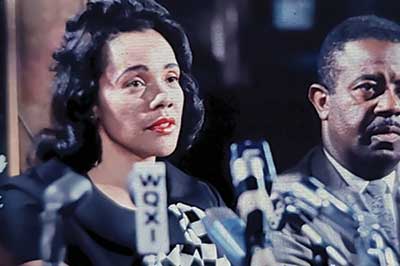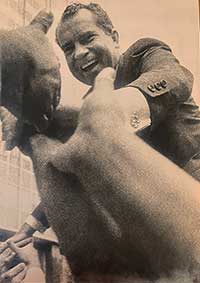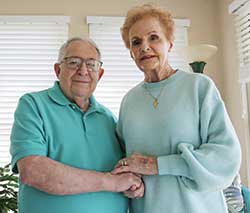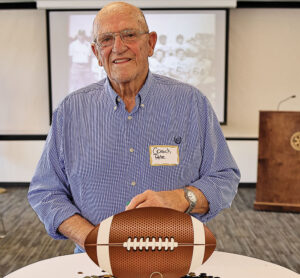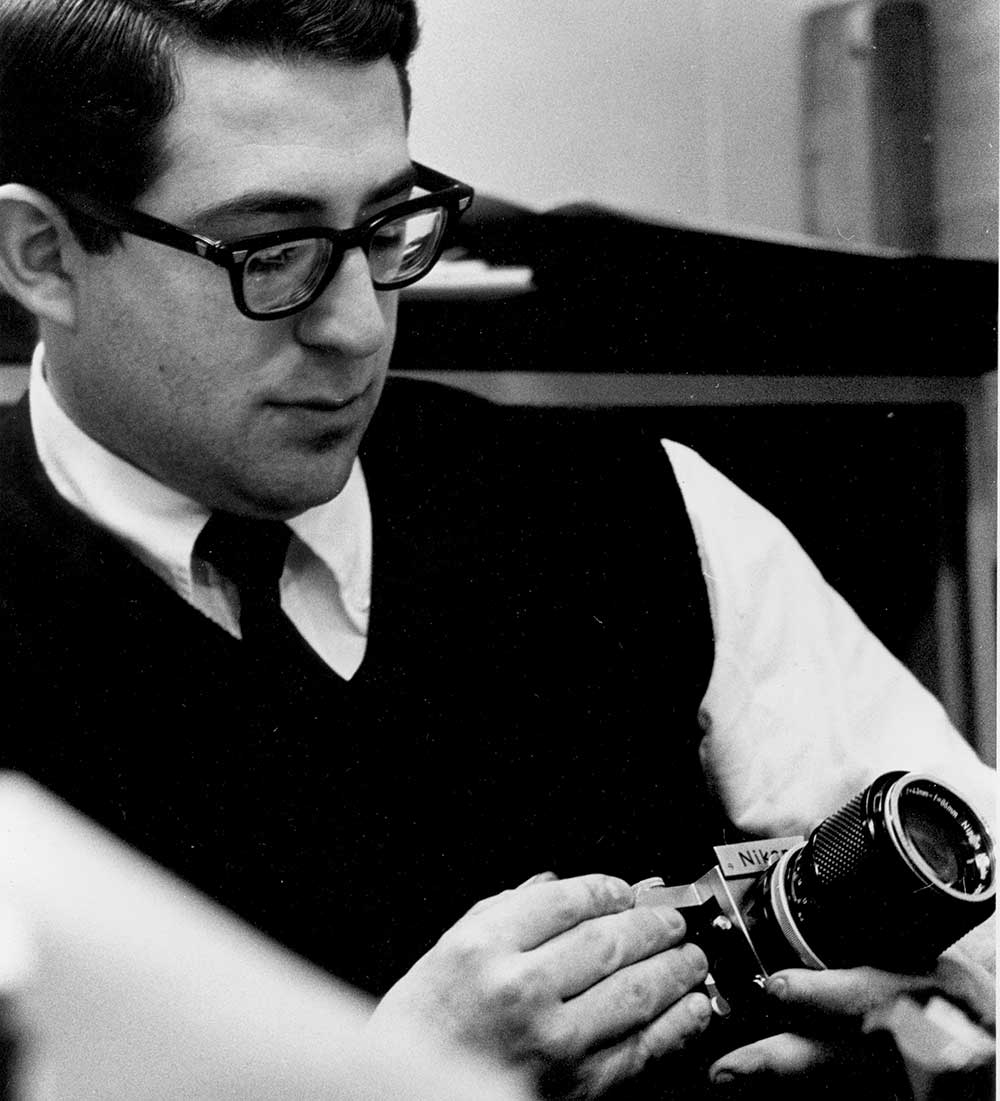
Larry Krantz reflects on storied career as photographer, video editor, teacher
Story by Paul South
Photos by Graham Hadley
Submitted Photos
Captivating photography – the elegant art of light and shadow – is also about timing. The same could be said of Lawrence Krantz’s fourscore plus one years on earth.
The Logan Martin Lake resident’s life may be the most compelling you’ve never heard of, taking him from his Atlanta hometown to Hollywood and into the eye of the righteous hurricane of the Civil Rights movement. It took him to the lightning-fast advancement of technology at Apple and making photos and films with phones.
He rubbed shoulders with icons – the Rev. Dr. Martin Luther King Jr. and legendary filmmaker Roger Corman. He snapped photos in the golden age of magazines for Life and Playboy, trained at Life and National Geographic and worked as a photojournalist for news agencies like the Associated Press and Black Star.
He chronicled national grief, photographing King’s 1968 funeral and influenced pop culture behind the scenes, as a film editor for a then-unknown chef, Alton Brown, on the upstart Food Network show, Good Eats.
Krantz, now 81, crossed paths with Henry Fonda on the MGM lot, came to know Richard Roundtree and worked on films like Sharky’s Machine and Blood of The Dragon.
When it comes to capturing light and shadow, Krantz, it seems, has seen it all.
“I’m just a guy who’s had some good opportunities,” he says. “And you know, I made something with it.”
Indeed, he did.
It all started with a box camera, a 13th birthday gift from an uncle and a chance encounter with a filmmaker at Isadore Krantz’s hardware store. As a kid, young Lawrence kept his ear tuned to the police radio. When a nearby house fire or other newsworthy event broke, the teen raced to the scene, snapping photos for The Atlanta Journal. Soon, with the Journal’s help, the teen was doing “ride alongs” with Atlanta police. He also shot local dances with his best friend.
“I was doing everything I could to make dollars so I could buy equipment,” he says. “My roots were photography, but I graduated to movies and television,” Krantz says.
While working in his dad’s hardware store in the early 1960s, he met the photo and magazine journalist and novelist William Diehl, eventually becoming his apprentice. The two worked together for the next two decades.
Diehl authored nine novels, including Sharky’s Machine and Primal Fear, both made into films. Krantz worked with Diehl and Burt Reynolds, the star and director of Sharky’s Machine. In fact, Krantz inspired a character called “Nosh” – Yiddish for “Eat” – in Sharky’s Machine. “Anybody that knows me knows I like to eat,” Krantz said.
“I worked on independent movies and became an editor for Bill,” Krantz recalled. “I loved it.”
But while he shared the MGM lot with Elvis and Fonda, craning his neck to look for Fonda’s Woody station wagon in its parking space, it was not glitz and glamor.
“We were there to work,” Krantz recalls. “At lunchtime, there were people who would stop by to see Bill and meet him. He garnered the notoriety.”
Still, for Krantz, it was a heady time. The pair often ate in the MGM commissary, rubbing shoulders with veteran actor James Hong, known today to a new generation of viewers for his roles in Seinfeld and The Big Bang Theory, as well as the director Roger Corman, who influenced noted directors Martin Scorsese, Francis Ford Coppola, the late Peter Bogdanovich, Quentin Tarantino and Ron Howard.
Of Corman, Krantz says, “We knew Roger. He had this knack for making low-budget movies that made a lot of money. He was about making money.”
We would buy footage from events like speedboat races but hire different actors for close-up scenes. With the help of James Hong, Diehl bought a martial arts film from Hong Kong, looking to cash in the on martial arts madness of the 1970s.
“That’s what Bill wanted to do,” Krantz recalls. “He wanted to ride on the coattails of Bruce Lee’s Enter the Dragon.”
The result was a Diehl film called, Return of the Dragon, an overdubbed film without Bruce Lee, but with a low budget and big box office. Call the film a mix of Shane meets martial arts.
“Bill made a lot of money on that,” Krantz says.
Diehl and Krantz first worked together in Atlanta, in the early days of Atlanta magazine, where they collaborated with the late Southern novelist and Auburn alumna, Anne Rivers Siddons.
“They were great times,” Krantz says.
The pair’s pre-Hollywood work in the 1960s took a different path. Krantz accompanied his mentor to south Georgia for the United States Information Agency, where they photographed young civil rights workers being trained to face the crackle and spark, verbal and physical abuse they would face in the segregated South.
“It changed my life,” Krantz says.
“Bill and Dr. King took a liking to each other, and Bill volunteered our services to the Southern Christian Leadership Conference. That included all of us.”
Krantz dined twice at the King home in Atlanta. And he would walk with the famous and the everyday to King’s earthly resting place.
It was a small slice of Krantz’s remarkable career. But it was nonetheless important. The memories of “Whites Only” water fountains are burned in his memory.
“Growing up in Atlanta, it was very segregated like Birmingham. (The work) changed me.”
He remembers one meal, when he asked King why he tried so hard to achieve racial equality, when eventually it was going to happen.
“He said, ‘Larry, I would like to see it in my time and not in my grandchildren’s time.’ That I remember.”
Krantz has lived to see King’s dream move toward reality. “I feel very fortunate to have seen that,” he says.
Krantz and Diehl took different paths for a period, but the two would reunite in Atlanta for independent film work. He made award winning commercials at Jayan Productions with nationally known director Jimmy Collins. Later, Krantz would work for the Food Network, Turner Classic Movies and other television shows. After a four-year PBS show, Krantz joined Apple for more than a decade in the early days of digital photography and filmmaking. He still feels the excitement.
Now, even in retirement with his wife, Mary Esther, Krantz is at work, doing film editing for Dovetail Landing, a veteran residential community dedicated to transitioning veterans in Alabama located in Lincoln and for the new Museum of Pell City.
“I feel like I’ve been reawakened from my slumber. It’s exciting.” For Museum of Pell City, Krantz is helping edit interviews for its Living History program. He not only wants to celebrate the town’s past, but the present and future, training schoolchildren to become filmmakers with their seemingly ever-present Smartphone. For Krantz, there’s always another story to tell.
And of his life in light, shadow and time, “We were learning as we were going. I didn’t learn from school. I learned being in the trenches, on the job. And everything we did had to work. I was excited by that. I’ve had a great career,” he said.
“Life gives you opportunities, and when you get them, you have to go with them.”















